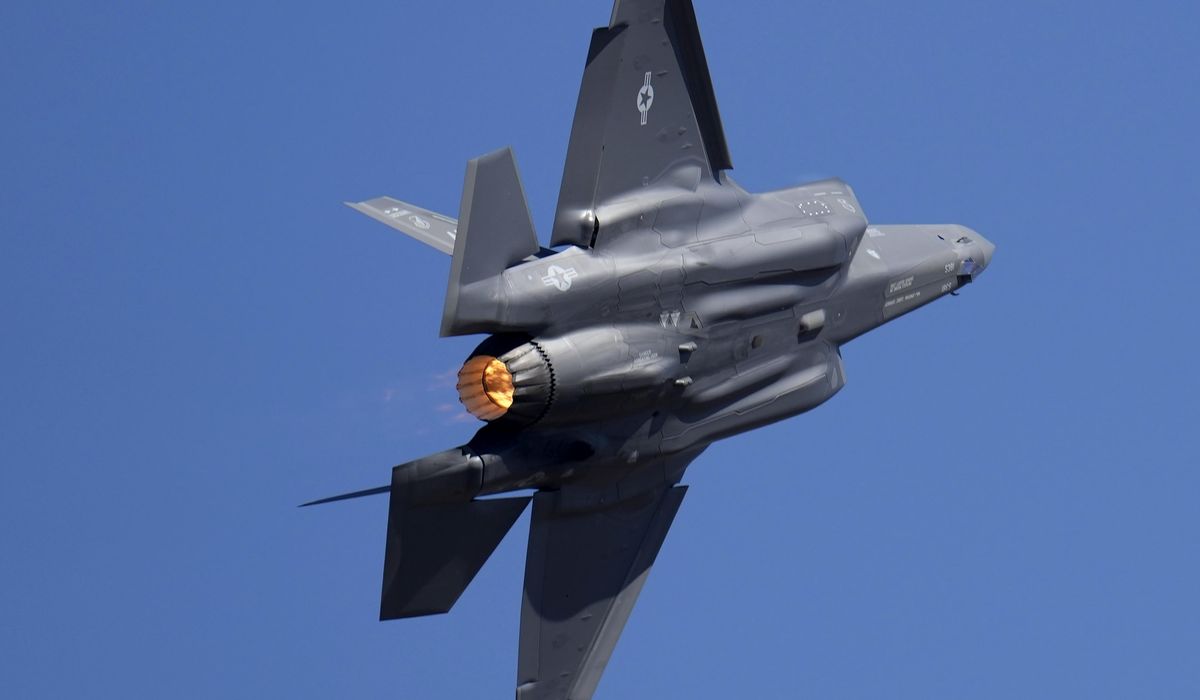


A U.S. Air Force pilot safely ejected from a single-seat F-35 fighter jet that crashed Tuesday during a training exercise at Eielson Air Force Base in Alaska.
The incident occurred during the landing phase when the pilot experienced an “inflight malfunction” and declared an emergency, according to Col. Paul Townsend, commander of the 354th Fighter Wing.
The pilot was evaluated at a medical facility while the aircraft suffered significant damage in the early afternoon crash.
This latest incident comes months after a May 2024 Government Accountability Office report revealed the F-35 program, the Pentagon’s most ambitious weapons program ever, faces mounting costs expected to exceed $2 trillion in the coming decades.
While the program reached an important “full rate production” milestone in March 2024, contractors continue to deliver engines and aircraft late – a trend that has worsened in recent years.
In 2023, a more unusual incident in South Carolina saw an F-35B continue flying pilotless for 60 miles after its pilot ejected, eventually crashing in a field outside Charleston.
Witnesses reported seeing the unmanned aircraft flying almost “inverted” just 100 feet above treetops. Adding to the mystery, the jet’s transponder wasn’t working, making it difficult for the military to track – it took over 24 hours to locate the wreckage.
The F-35 has three main variants: the F-35A for conventional takeoff and landing, the F-35B for short takeoff and vertical landing, and the F-35C for aircraft carriers.
Lockheed Martin serves as the prime contractor, working with Northrop Grumman and BAE Systems, while Pratt & Whitney produces the engines.
Recent GAO findings show the F-35 fleet’s mission-capable rate – the percentage of time the aircraft can perform its tasked missions – was only about 55% in March 2023, far below program goals.
The Pentagon has undertaken cost-cutting efforts, claiming nearly $85 billion in lifetime savings through improved maintenance and reliability. Both the Air Force and Navy have reduced their flying times – by 19% and 45% respectively – to meet budget targets, according to the 2024 GAO report.
In May, another F-35 crashed in New Mexico after the pilot stopped to refuel on the way to Edwards Air Force Base, resulting in serious injuries.
Despite these challenges, the program continues to expand. Eielson Air Force Base, located about 25 miles south of Fairbanks, was selected in 2016 to host 54 F-35s.
This led to a half-billion-dollar expansion including 36 new buildings, dozens of housing units, and the addition of about 3,500 new active duty airmen and their dependents.
The F-35 can fly more than 12 hours at a time, reaching almost anywhere in the Northern Hemisphere in one mission.
The Air Force will conduct “a thorough investigation in hopes to minimize the chances of such occurrences from happening again,” Townsend said.
Read more:
• All-in costs for troubled F-35 fighter jet program price tag likely to top $2 trillion, GAO says
• F-35 Lightning program’s cost keeps rocketing — to over $1.5 trillion
• F-35 crash: More questions than answers as investigation drags on
• Marine Corps orders a two-day aviator stand-down as questions mount over missing F-35 stealth jet
This article is written with the assistance of generative artificial intelligence based solely on Washington Times original reporting and wire services. For more information, please read our AI policy or contact Ann Wog, Managing Editor for Digital, at awog@washingtontimes.com
The Washington Times AI Ethics Newsroom Committee can be reached at aispotlight@washingtontimes.com.
